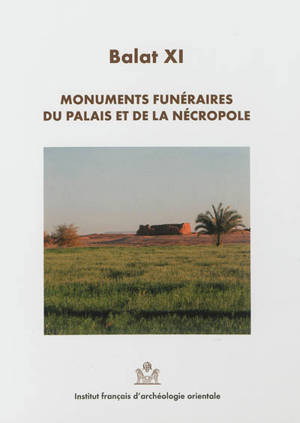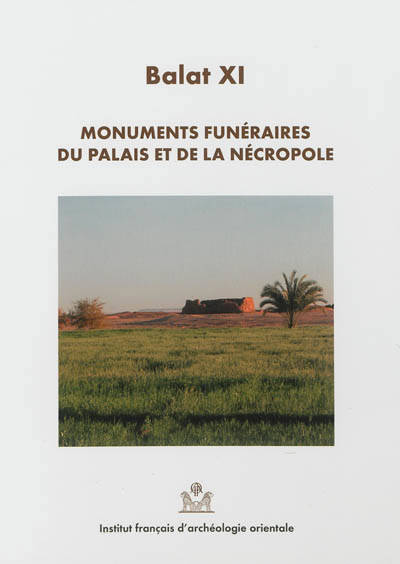
- Retrait gratuit dans votre magasin Club
- 7.000.000 titres dans notre catalogue
- Payer en toute sécurité
- Toujours un magasin près de chez vous
- Retrait gratuit dans votre magasin Club
- 7.000.0000 titres dans notre catalogue
- Payer en toute sécurité
- Toujours un magasin près de chez vous
Description
Balat XI n'est pas une monographie comme les dix précédents volumes de la série, mais réunit des études de monuments inédits qui illustrent la pratique du culte funéraire dans la famille des gouverneurs de l'oasis de Dakhla de 2350 à 2050 environ.
Dans l'enceinte nord d'Ayn Asil, première résidence des gouverneurs, un linteau inscrit et deux fragments statuaires sont les indices de l'existence de sanctuaires de ka de gouverneurs dès le règne de Pépy Ier. Au sud, après incendie du palais à l'extrême fin de l'Ancien Empire, la construction par un gouverneur inconnu d un sanctuaire funéraire double, dont une chapelle est consacrée à Médou-néfer à titre d'ancêtre, marque une nouvelle fondation. Sur les sols de ces sanctuaires de ka, des dépôts de plats d'offrande, caractéristiques du site de Balat, représentent un indice concret de la pratique du culte.
Dans la nécropole de Qila al-Dabba, les petits monuments est du complexe du Mastaba I (M I/B et M I/C) sont les plus anciens tombeaux de gouverneurs et datent du début de la VIe dynastie. Le vaste monument d'Ima-Pépy/lma-Méryrê (M I/A) s'appuie contre eux. Puis le mastaba de Khentikaou-Pépy (M IV) inaugure un nouvel emplacement. Autour de ce monument, le plus grand et le plus haut de la nécropole, se groupent ceux de Khentika (M III, règne de Pépy II), puis de Médou-néfer (M V) et d'Ima-Pépy (M II).
Balat XI is not a monograph like the ten preceding volumes in the series, but gathers together studies of various monuments which illustrate the funerary practices within the family of the governors ruling the oasis of Dakhla from 2350 to approximately 2050 BC.
In the northern enclosure of Ayn Asil, the first residence of the governors, an inscribed lintel and two fragments of sculpture are the indices of the existence of ka-sanctuaries of governors from the reign of Pepy I. In the south, after the fire in the palace at the extreme end of the Old Kingdom, an unknown governor constructed a twin funerary sanctuary in which one of the two chapels was consecrated to Medu-nefer by his right of being an ancestor ; it marks a new foundation.
On the floors of these ka-sanctuaries, deposits of offering dishes characteristic of the site of Balat, reveal hard evidence for the practice of the cult. In the Qila al-Dabba necropolis, the small eastern monuments of the Mastaba I (M l/B and M I/C) are the oldest tombs of governors, which date from the beginning of the 6th Dynasty. The large monument of Ima-Pepy/lma-Meryre (M I/A) rests against them. Thus, the mastaba of Khentikaw-Pepy (M IV) inaugurated a new site. Around this mastaba, the largest and the highest within the necropolis, are grouped the monuments of Khentika (M III, reign of Pepy II), then of Medu-nefer (M V) and Ima-Pepy (M II).
Spécifications
Parties prenantes
- Auteur(s) :
- Editeur:
Contenu
- Nombre de pages :
- 168
- Langue:
- Français, Anglais
- Collection :
- Tome:
- n° 11
Caractéristiques
- EAN:
- 9782724706376
- Date de parution :
- 06-06-13
- Format:
- Livre relié
- Dimensions :
- 240 mm x 320 mm
- Poids :
- 1110 g

Les avis
Nous publions uniquement les avis qui respectent les conditions requises. Consultez nos conditions pour les avis.






